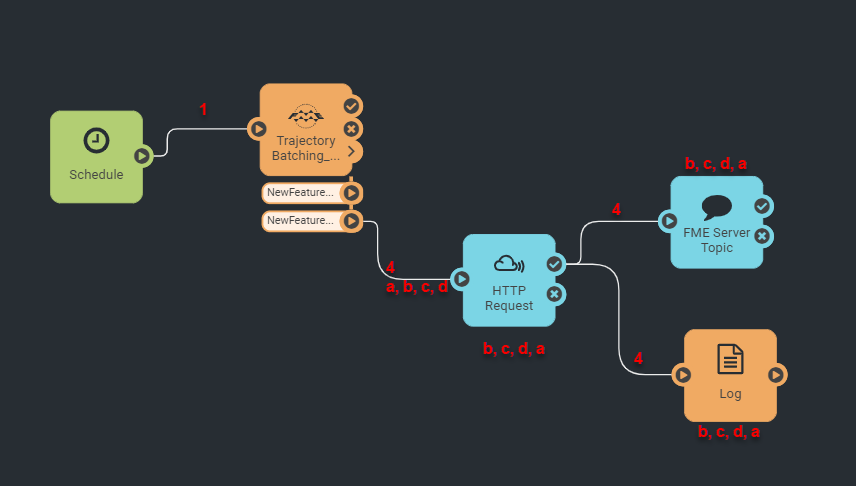Hi,
I am trying to understand the behavior of features etc. in 2020 Automations, primarily the processing order. Below is a quick example of a test I made and it appears that when features come out and trigger an external action, they are processed in parallel (btw, I really miss the debugging features of Workbench where I can see the features move across and preview the data!). Is this observation correct? In my example, "a" was supposed to happen and finish before "b", "c", and "d" are performed. If I made the HTTP call within a workspace, this issue would not happen since it's all serial: features are processed in the order they arrive at each transformer (for the most part).
I'm not finding a lot of documentation for creating complex automations where you can control what gets processed based on a previous result, limited looping (ex: allow only 20 loops to prevent endless looping) etc. Looping, which can be done within a custom transformer, can be controlled to prevent infinite looping but am not seeing anything directly related to this in automations.
Back to the above test example, I actually need to update "b", "c" and "d" when "a" completes (update some parameters before I have the complete HTTP string to GET). I can do all this is a workspace but am trying to leverage and learn to use automations instead. Am I trying to use the wrong tool for the job or is there functionality in automations that I am just not aware of and how to use?
Please note that the http call I am making will always stream back a success (it runs an FME Server workspace that streams back a json response). So to determine whether it was a true success or to parse data from that response to update the next URLs to GET, I have to use other workspaces to parse the info and then make a new HTTP call or do some kind of looping. Hope this makes some sense, thanks for reading and for any insight!






